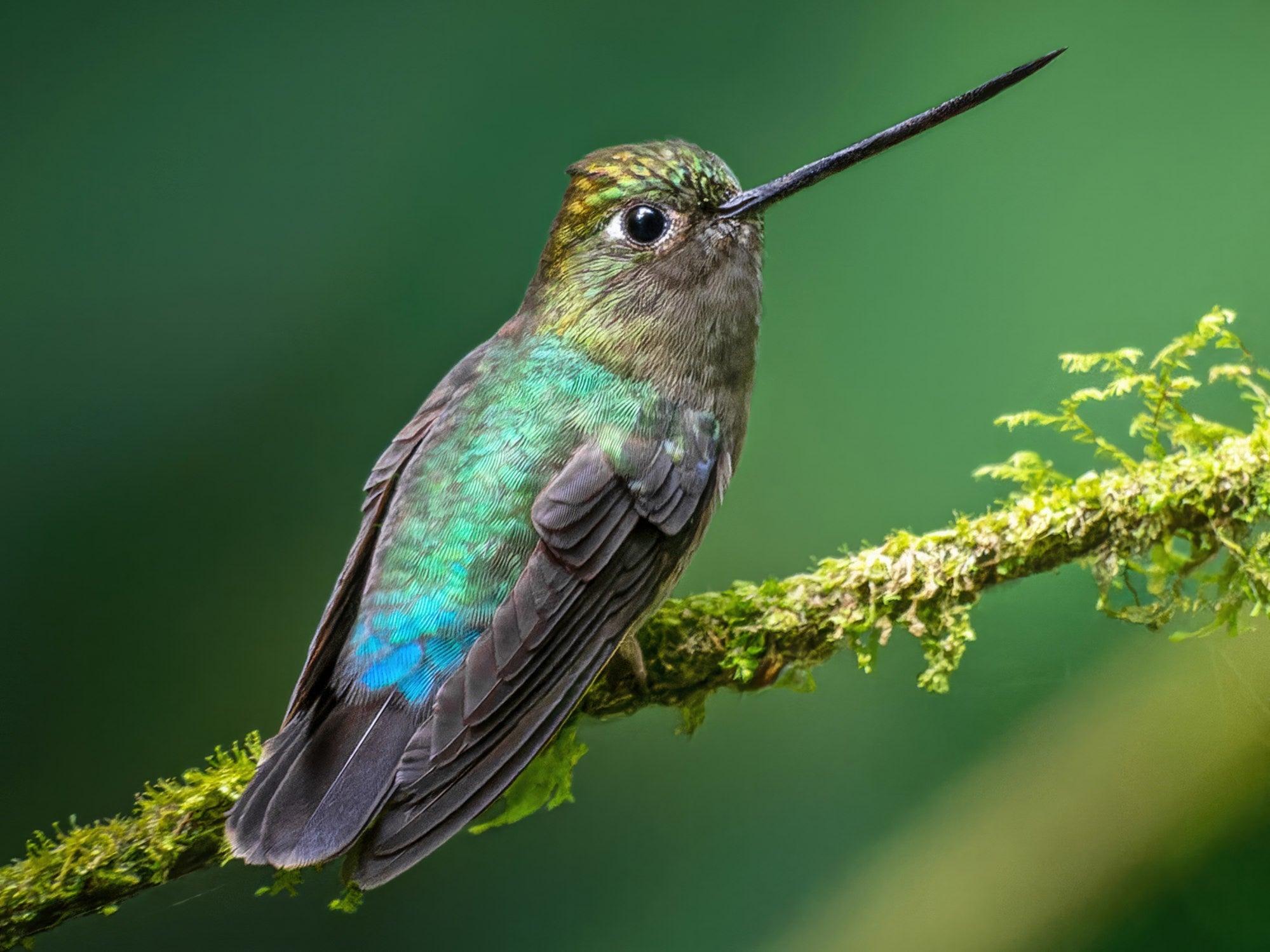Green-fronted Lancebill
The Green-fronted Lancebill (Doryfera ludovicae) is another species of lancebill hummingbird found in Colombia. Read in Spanish
Appearance: The Green-fronted Lancebill is a medium-sized hummingbird with a distinct appearance. It has iridescent green upperparts, a green crown with a bluish sheen, and a white or light-colored belly. The bill is long, straight, and slender, characteristic of lancebill hummingbirds. Males and females of this species generally appear similar in plumage.
Habitat: The Green-fronted Lancebill inhabits montane forests, cloud forests, and forest edges in the Andean region. These hummingbirds are typically found at higher elevations, similar to the Blue-fronted Lancebill, between 1200 to 2400 m above sea level.
Behavior: The Green-fronted Lancebill is known for its agile flight and energetic foraging behavior. They feed on nectar from flowers using their specialized bills and also capture insects for protein. These hummingbirds are often seen darting among flowers and perching on branches within their forest habitats.
Breeding: The breeding biology of the Green-fronted Lancebill involves courtship displays, nest-building, and parental care similar to other hummingbird species. They construct small cup-shaped nests made of plant fibers and other materials, usually placed in elevated positions in trees or shrubs. The female lays one or two eggs, and both parents participate in incubation and feeding duties.
Conservation Status: The Green-fronted Lancebill is classified as of Least Concern.
Distribution
The Green-fronted Lancebill (Doryfera ludovicae) is primarily found in the Andean region of Colombia.
Central Andes: The Central Andes of Colombia encompass high-altitude mountain ranges and cloud forests where the Green-fronted Lancebill can be found. This region includes areas such as the Cordillera Central and Cordillera Oriental, known for their diverse bird populations and unique ecosystems.
Western Andes: The Western Andes of Colombia also provide suitable habitat for the Green-fronted Lancebill. This region features lush montane forests, river valleys, and steep slopes that support a variety of hummingbird species, including the Green-fronted Lancebill.
Northern Andes: In the Northern Andes of Colombia, including regions like the Santander and Norte de Santander departments, the Green-fronted Lancebill may also be present. These areas offer a mix of montane forests and páramo habitats where hummingbirds thrive.
Taxonomy
The Green-fronted Lancebill (Doryfera ludovicae)
- Kingdom: Animalia
- Phylum: Chordata
- Class: Aves (Birds)
- Order: Caprimulgiformes
- Family: Trochilidae
- Genus: Doryfera
- Species: Doryfera ludovicae
Vocalization
The Green-fronted Lancebill (Doryfera ludovicae)
- Chirping and Chattering: Green-fronted Lancebills are often heard producing rapid chirping or chattering sounds during various activities, such as foraging, interactions with other individuals, or defending their territories. These vocalizations may serve as a means of signaling presence or conveying aggression.
- Buzzing or Trilling: Hummingbirds, including the Green-fronted Lancebill, are capable of creating buzzing or trilling sounds as part of their vocal repertoire. These sounds are often produced during territorial disputes or courtship displays and can vary in intensity and frequency.
- Whistling or Whirring: Some descriptions mention that the Green-fronted Lancebill may emit whistling or whirring calls that are distinctive and help differentiate this species from other hummingbirds in the same habitats.
- Territorial Calls: Male Green-fronted Lancebills may produce specific vocalizations to establish and defend their territories from intruders or rival males. These calls are typically sharp and pronounced, signaling ownership of a feeding or nesting area.
- Mating Calls: During courtship and mating rituals, Green-fronted Lancebills may engage in complex vocal interactions with potential mates. These calls can be softer, more melodious, and aid in the bonding between individuals prior to breeding.





